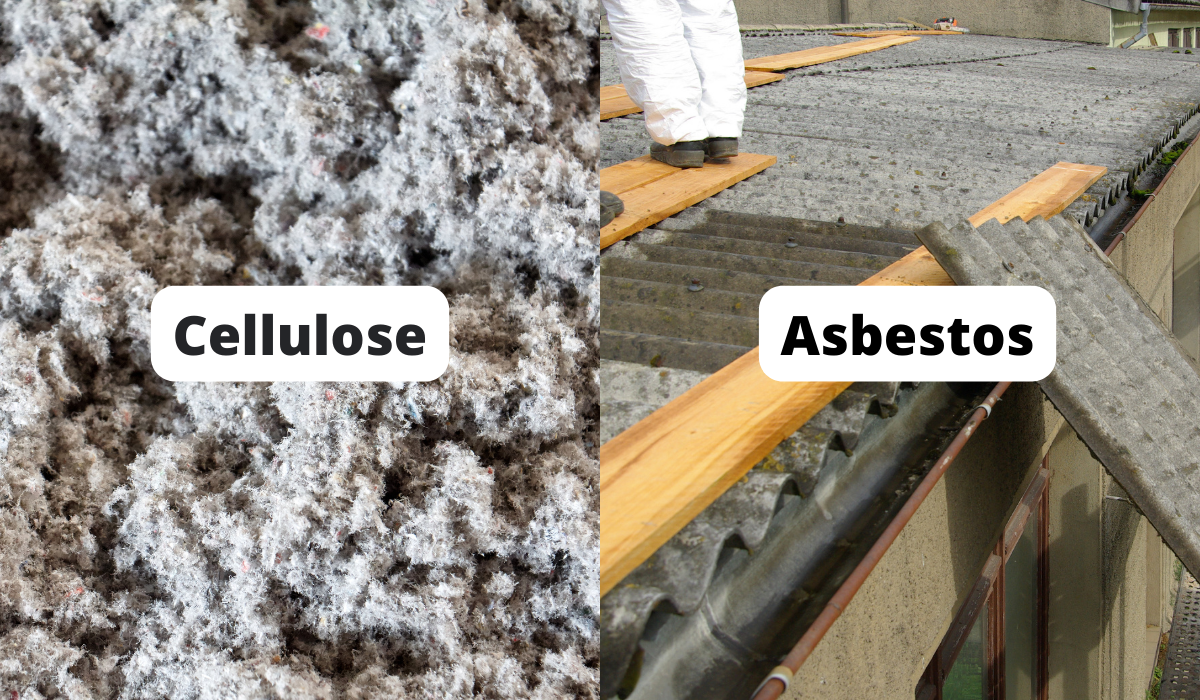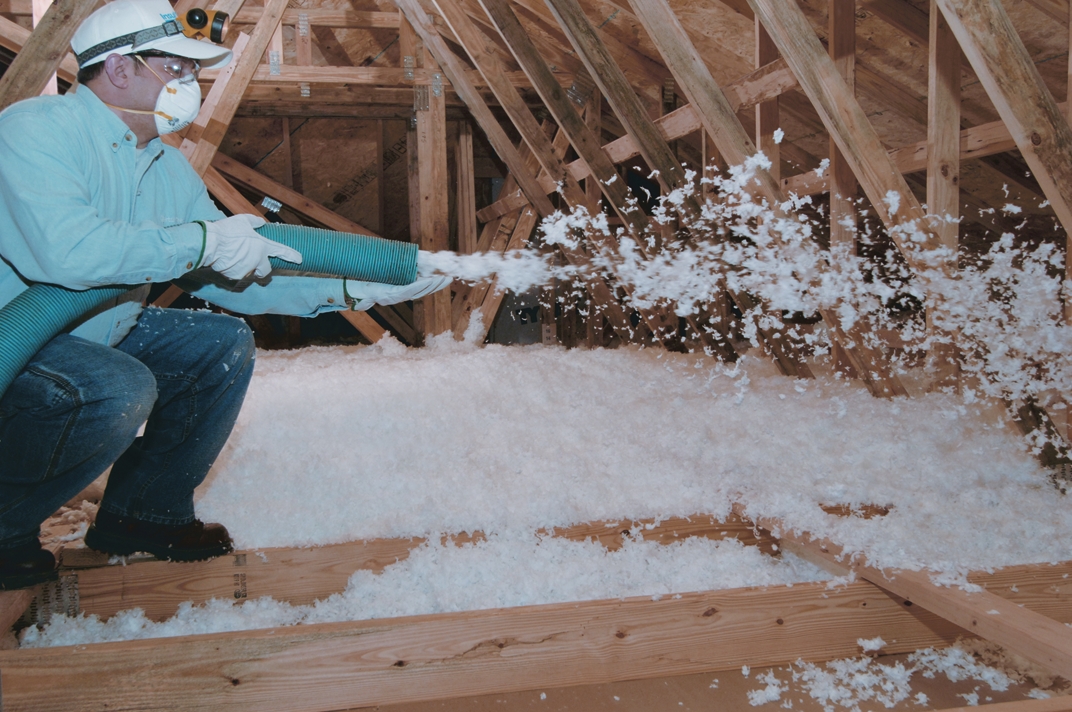Blown-in insulation offers Dunwoody homeowners superior energy efficiency with complete coverage that fills every gap and corner in attics, walls, and crawl spaces. This insulation type cuts heating and cooling costs by up to 20% while creating a more comfortable home environment throughout all seasons. Unlike traditional batts that leave gaps, blown-in material forms a seamless thermal blanket that effectively blocks air transfer.
Homeowners in Dunwoody particularly benefit from blown-in insulation due to Georgia's hot summers and occasionally cold winters. The material's excellent R-value (insulating power) and air-sealing properties create significant energy savings while improving indoor comfort. Installation is quick, non-invasive, and adaptable to homes of any age or construction style.
Types of Blown-In Insulation
Blown-in insulation comes in several varieties, each with unique properties suited for different applications.
Material Type
R-Value per Inch
Cost Range
Best Applications
Lifespan
Cellulose
3.2-3.8
$$
Attics, enclosed walls
20-30 years
Fiberglass
2.2-2.7
$
Open attics, new construction
30-50+ years
Mineral Wool
3.0-3.3
$$$
Fire-resistant areas, soundproofing
30-80+ years
Cellulose Insulation
Cellulose insulation, made primarily from recycled paper, provides excellent thermal performance. The material undergoes treatment with borate compounds that make it fire-resistant and repel pests. Cellulose packs densely into spaces, limiting air movement and creating an effective thermal barrier.
Bonus Tip: Cellulose contains up to 85% recycled content, making it one of the most environmentally friendly insulation options available.
Fiberglass Blown-In
Fiberglass blown-in insulation consists of tiny glass fibers that trap air pockets to slow heat transfer. This lightweight material installs quickly and costs less than other options. Modern fiberglass products contain no formaldehyde and cause less skin irritation than older versions.
Mineral Wool
Mineral wool blown-in insulation, made from molten rock or slag, offers superior fire resistance and sound dampening qualities. This premium material handles moisture well without losing insulating value and doesn't support mold growth.

The Installation Process
Blown-in insulation installation involves specialized equipment but creates minimal disruption to your home.
- Assessment: Professionals evaluate your home's current insulation levels and identify problem areas.
- Preparation: The crew covers furniture and seals off work areas to prevent dust migration.
- Installation: Using a blowing machine, technicians feed the insulation material through a hose to target areas.
- Distribution: The material is distributed evenly to achieve the recommended depth and coverage.
- Clean-up: Workers remove all equipment and clean any residual dust or debris.
A professional team can typically insulate an average-sized attic in 4-6 hours, making this a one-day project for most homes.

Performance Data and Energy Savings
Blown-in insulation delivers measurable performance improvements for Dunwoody homes.
Performance Metric
Typical Improvement
Energy Cost Reduction
15-20% annually
Temperature Consistency
±2°F between rooms
Noise Reduction
4-6 decibel decrease
Air Quality
30% fewer airborne particles
HVAC Efficiency
10-15% increased performance
According to the Department of Energy, properly insulated homes in the Southeast region save an average of $250-$400 annually on heating and cooling costs. For Dunwoody homeowners, this means the insulation typically pays for itself within 3-5 years through energy savings alone.
Benefits for Dunwoody Homes
Blown-in insulation addresses specific challenges faced by homeowners in the Dunwoody area:
- Heat Wave Protection: Creates a robust barrier against intense summer temperatures
- Moisture Management: Helps regulate humidity levels common in Georgia
- Allergen Reduction: Limits the infiltration of outdoor allergens like pollen
- Lower Utility Bills: Reduces the cost of air conditioning during hot months
- Improved Comfort: Eliminates hot and cold spots throughout the home
Market data shows that energy-efficient homes in Dunwoody typically sell 2-3% higher than comparable properties without updated insulation. This represents an average increase of $8,000-$12,000 in home value.
Things to Consider Before Making a Decision
Before investing in blown-in insulation, evaluate these important factors:
Home Structure
- Age of Home: Older homes (pre-1980s) often lack adequate insulation and benefit most from upgrades.
- Construction Type: Different wall systems require specific installation approaches.
- Existing Insulation: Sometimes existing insulation can remain in place, while other situations require removal.
Budget Considerations
- Initial Investment: Complete home insulation typically costs $1,800-$3,500 for an average Dunwoody home.
- Available Incentives: Check for federal tax credits, Georgia Power rebates, or local energy efficiency programs.
- Long-term Value: Calculate energy savings over a 10-year period to determine true cost-effectiveness.
Professional Selection
Choose contractors who:
- Are licensed and insured in Georgia
- Have specific experience with blown-in insulation
- Provide detailed energy assessments before quoting
- Offer warranties on both materials and labor
Bonus Tip: Request to see thermal imaging results before and after installation to verify the improvement in your home's thermal envelope.
Common Questions About Blown-In Insulation
Can blown-in insulation cause moisture problems?
No, when properly installed, blown-in insulation helps manage moisture. Professionals evaluate your home's ventilation needs and ensure proper airflow to prevent condensation issues.
How does blown-in compare to spray foam?
Blown-in insulation costs significantly less than spray foam while providing excellent thermal performance. Spray foam offers superior air sealing but at a premium price point. Many homeowners use blown-in for large areas like attics and spray foam for targeted air leaks.
Will I need to leave my home during installation?
No evacuation is necessary. The installation process creates minimal disruption, though you may want to avoid the immediate work area due to noise and some dust.
How long does blown-in insulation last?
With proper installation and home maintenance, blown-in insulation typically performs effectively for:
- Cellulose: 20-30 years
- Fiberglass: 30-50+ years
- Mineral wool: 30-80+ years
FAQ
Q: How soon will I notice a difference after installation? A: Most homeowners report immediate improvements in comfort. Energy savings become apparent on the first utility bill after installation.
Q: Can I install blown-in insulation myself? A: While DIY kits exist, professional installation ensures proper depth, coverage, and addressing of potential issues like hidden air leaks or electrical hazards.
Q: Is blown-in insulation safe for homes with children and pets? A: Yes, modern blown-in insulation materials are considered safe. Professionals take precautions during installation to minimize dust, and once settled, the materials are stable.
Q: Will blown-in insulation help with outside noise? A: Yes, particularly cellulose and mineral wool varieties provide significant sound dampening benefits, reducing noise from traffic, neighbors, and outdoor activities.
Q: How does blown-in insulation affect my home's air quality? A: By sealing air leaks, blown-in insulation reduces the infiltration of outdoor pollutants, allergens, and humidity, potentially improving indoor air quality.
Ready to Improve Your Home's Efficiency?
Blown-in insulation offers Dunwoody homeowners an effective solution for improved comfort, lower energy bills, and a more environmentally friendly home. By creating a complete thermal envelope without gaps or compression, this modern insulation approach addresses the specific challenges of Georgia's climate while providing long-lasting performance.
Apply these insights now: Schedule your free home energy assessment with Makeover Insulation. Experience the comfort and savings that proper insulation provides.
Makeover Insulation (470) 664-5300 [email protected]
Reviewer: Ava Clark shared her input based on 6 years of working with spray foam insulation teams. Her focus on customer trust and communication helped shape key parts of this post.




.jpg)
Comments